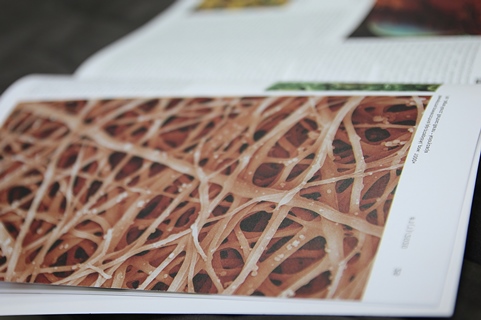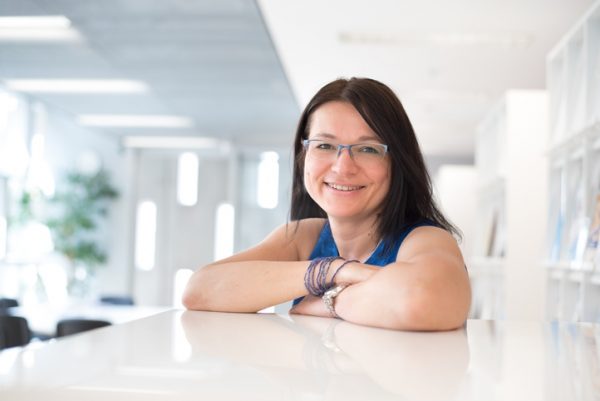„No Limits” is the new popular science semi-annual journal at the University of Silesia, which promotes the research conducted at our university, or in cooperation with other scientific units. Although the main topic of the first issue is climate changes, we will also find out from the articles how our experts save old prints, and get to know the history of Norwegian Viking Olaf Haraldsson. The beautiful graphic design and accessible way of presenting research are the main advantages of the new journal. Editor-in-chief, Dr. Agnieszka Sikora, tells us about the concept behind the magazine.
|Małgorzata Kłoskowicz|
What’s the best slogan to describe the idea of „No Limits”?
„No Limits” is science without limits. We want to tell about the research conducted by our scientists and reach the largest possible audience, also outside our country. Science is fascinating, and we prove that it’s possible to write about it in an interesting and accessible way, so that everyone is able to “have a look” into our laboratories and workrooms.
By doing this, we have joined the group of publishers for whom science promotion is extremely important.
When designing the journal, we were obviously looking for inspirations. I admit that we were influenced by “National Geographic” and “Research Horizons” – magazine of the University of Cambridge. As a university, we would also like to create a medium that would bridge the gap between the world of exact sciences, natural sciences and humanities in our laboratories and the world outside the university walls, where our inventions and discoveries are applied. The presented articles show that the world of science cannot be closed inside the university. Science knows no limits.
What are the topics in the first issue of “No Limits”?
The main topic concerns climate changes. The journal contains articles about our flying laboratory which collects air quality data (ULKA), research on melting glaciers in Spitsbergen and search for new, more drought-resistant forms of barley.
We have prepared interesting materials for people interested in history (story of Norwegian Viking), art (expert opinions on painting signatures) and books (rescuing relics of medieval libraries).
We have also shared beautiful and unique photos of the micro-world, which show, for example, scots pine pollen grains and a fragment of a wolf spider’s head.
We write about revolutionising the pharmaceutical industry, latest trends in implantology and experimental solutions supporting rehabilitation.
So, on the one hand, we promote the scientific research activities of our scientists, and on the other hand, we provide them with an opportunity to establish cooperation, sometimes quite surprising, as experience shows.
For many years, I have been working with “Gazeta Uniwersytecka UŚ”, which is mainly addressed to our employees, doctoral students, students and friends of the University of Silesia. Life shows how surprising the history of articles sometimes is. The producers of historical TV series “Korona królów” (The Crown of Kings) got interested in one of the published interviews. I was asked to help them contact Assoc. Prof. Bożena Czwojdrak, medievalist from the Institute of History at the University of Silesia, who specialises in the genealogy of magnates and noblemen, as well as the Polish monarchy in the Late Middle Ages. As a result, she became a historical consultant to the series.
Also, we often get phone calls from people who prepare various publications and ask us to help them contact the scientists about whom they read in “Gazeta Uniwersytecka UŚ”.
We want the same to happen for “No Limits”, but this time we are going to move outside Poland. The semi-annual journal is published in two versions – in Polish and English. In other words, we are opening a window to the world for scientific research at our university.
“No Limits” is available both in paper format and online.
It is commonly thought that traditional press is no longer needed and it increasingly moves to the Internet. My opinion is that just as the lift failed to replace the stairs, the Internet will not replace magazines or paper books (and definitely not soon). Please take a look at this publication. Not only is it friendly for the eye, but also for the hands. The journal almost asks you to pick it.
I would also like to stress that we have chosen the right paper – more environmentally-friendly. The uncoated graphic paper is FSCTM and PEFC certified, which means, among other things, that no harmful chemical substances were applied for its production, the wood used comes from legal sources, whereas the existing laws, local community opinion and needs of endangered animal species were all taken into consideration for logging. Moreover, production of the paper chosen by us is carried out in accordance with the existing EU regulations. We find this very important.
Thank you for the interview.







